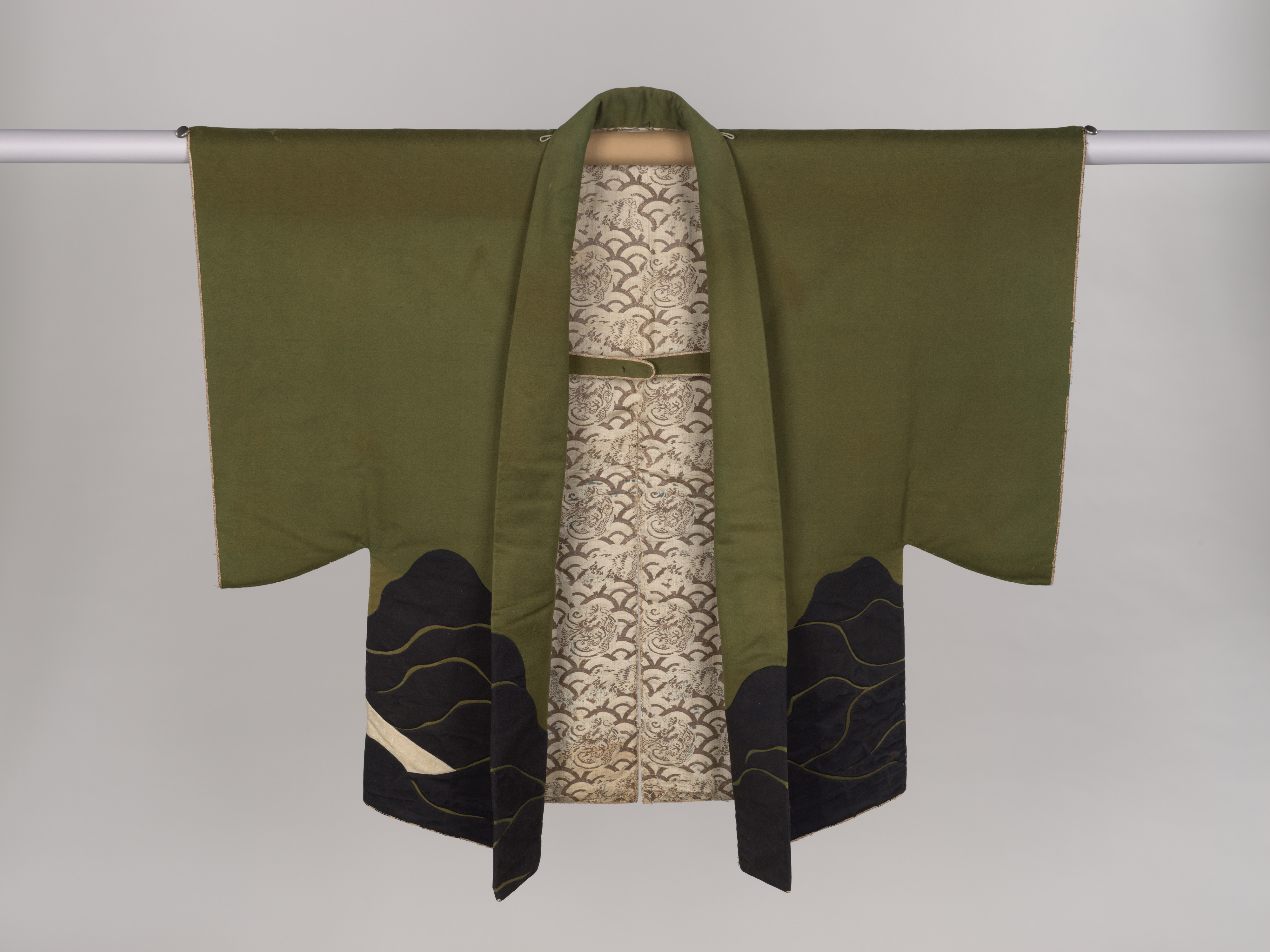Battle surcoat (jinbaori) with Mount Fuji and waves
Not on view
The graphically powerful design on the back of this surcoat (jinbaori ) depicts a stylized volcano in white wool applique against a green wool ground. At the feet of the volcano are black waves. The mountain’s triple peak indicates that it is Mount Fuji, the subject of religious veneration in Japan since ancient times.A well-known wool jinbaori with Mount Fuji pictured, is now owned by the Osaka Castle Museum. It is said to have been owned by Toyotomi Hideyoshi (1537–1598) and its bold colors and stylized decoration captures the flamboyant taste of the powerful warlord. Following the example of this famous jinbaori, Mount Fuji became a popular pattern on battle surcoats. Using imported European wool, called rasha in Japan, it was skillfully made as a warm, durable short jacket with long sleeves. Mount Fuji occupies a special place in the Japanese artistic imagination, for the beauty of its symmetrical slopes and its snow-capped top. The mountain also has a prominent role in religious activities and is seen as a sacred dwelling place of divinities of Shinto, Buddhist, and Taoist origins. In popular folklore the mountain is an auspicious symbol. On the back of the jinbaori is a red wool applique family crest, most likely representing the Horita clan. The lining is brocaded silk with dragons and stylized water patterns.
Due to rights restrictions, this image cannot be enlarged, viewed at full screen, or downloaded.
This artwork is meant to be viewed from right to left. Scroll left to view more.



